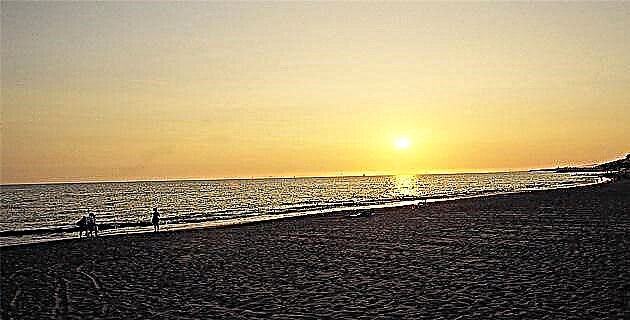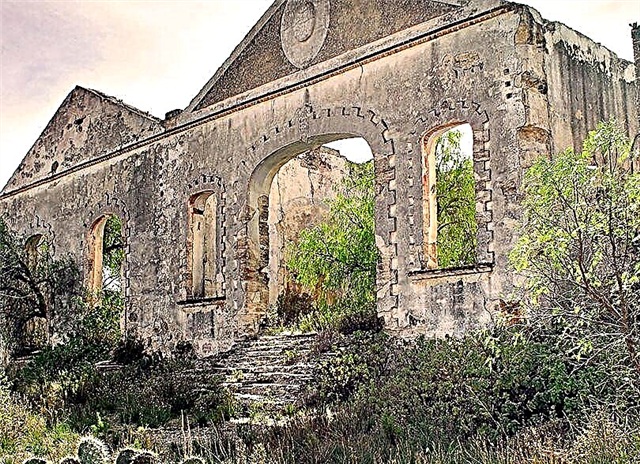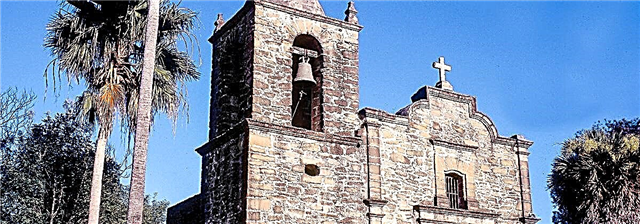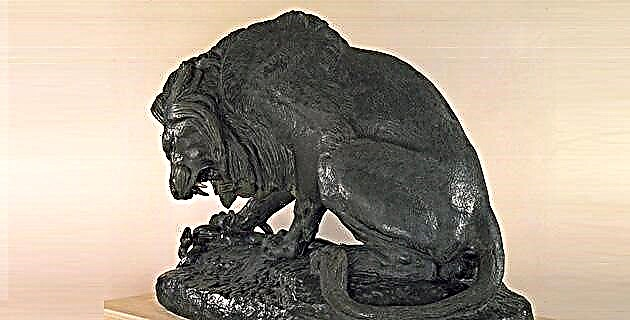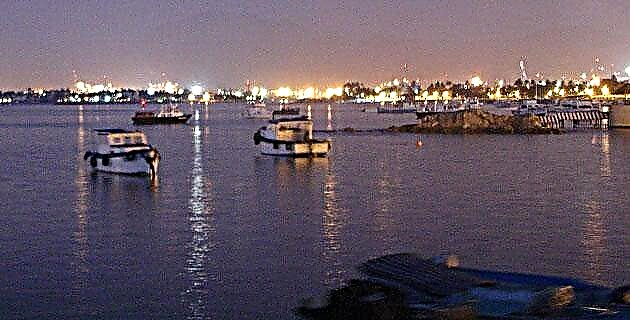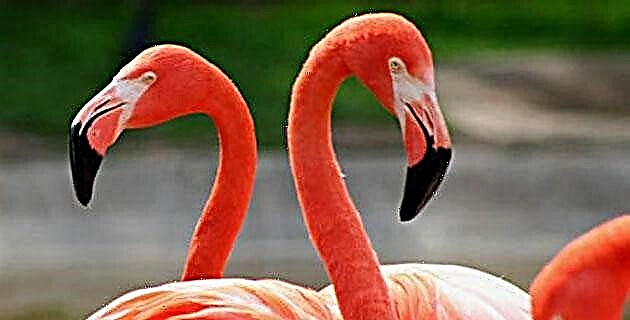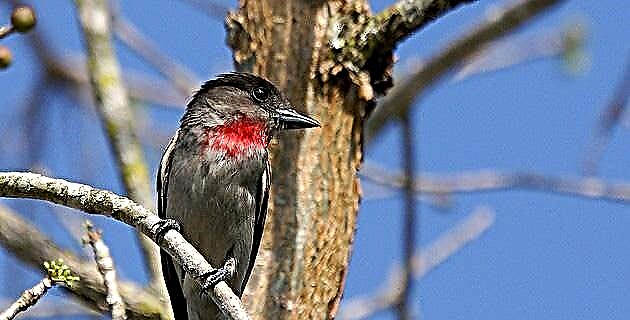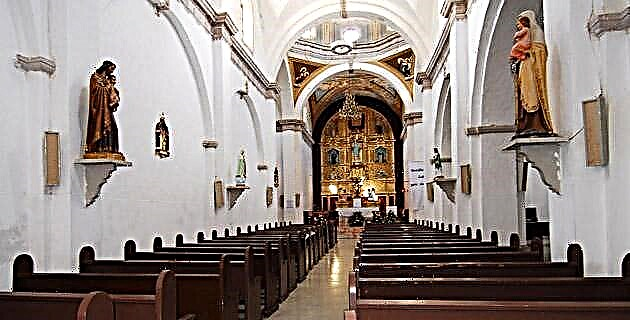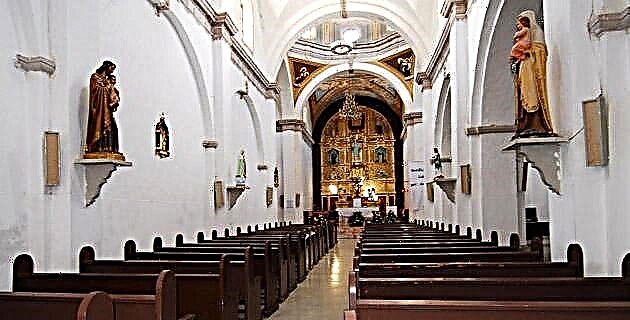
In 1997, 300 years of the founding of the mission of San Cristóbal de Nombre de Dios by the Franciscan Father Alonso Briones were celebrated, on the banks of the Sacramento River, in the valley where the capital of Chihuahua is currently located. This mission was the antecedent of the city and today Nombre de Dios is one of its colonies.
Although it was officially established in 1697, it dates back at least 20 years. Before this first European settlement, there existed from time immemorial a community of Concho Indians who called the site Nabacoloaba, whose meaning was lost. And these were the justification for the first Spanish foundations in the Chihuahua Valley.
At the beginning of the 18th century, the only permanent inhabitants in the region of the current city of Chihuahua and its surroundings were a few ranchers and Spanish missionaries, in addition to the indigenous people who lived congregated in various communities scattered around the mission of Nombre de Dios. .
In 1702, a local cowboy, looking for some beasts in an area about 40 km from the place, located some mines in front of the current Terrazas Station, at a point called El Cobre, and proceeded to make the respective complaint to the mayor of Nombre of God, at that time Blas Cano de los Ríos. Other sources indicate that they were discovered by the Spanish Bartolomé Gómez, a resident of Cusihuiriachi.
THE BIRTH OF THE SON
This finding motivated several neighbors to explore the surroundings; thus, in 1704, Juan de Dios Martín Barba and his son Cristóbal Luján discovered the first silver mine in what is now Santa Eulalia.
Juan de Dios Barba was a converted Indian from New Mexico. At that time he lived and worked in the mission of Nombre de Dios and some Tarahumara showed him silver outcrops in the nearby hills. Once the discovery was made, father and son denounced the vein, and named it San Francisco de Paula. In January 1705, Cristóbal Luján himself found another mine in the region, which he gave the name of Nuestra Señora del Rosario. Both Luján and Barba worked both fields until the first, while searching for water, discovered the vein that triggered the gold rush in the area.
In 1707, in the part called La Barranca, Luján and Barba opened the Nuestra Señora de la Soledad mine, called La Discovery, and within a few months many miners emigrated to the region; Mine claims were filed as closely as possible to the rich La Barranca seam.
After the Discovery, the discovery of the so-called Our Lady of Sorrows by General José de Zubiate is known. He found it in a place located 5 km from the current Santa Eulalia, which the indigenous people called Xicuahua and the Spanish corrupted "Chihuahua" or "Chiguagua". It is a term of Nahuatl origin that means "dry and sandy place". Because the origin is not concho, some scholars think that this word stayed there when the Nahua tribes made their pilgrimage to the south. There a small population developed shortly afterwards known as "Chihuahua el Viejo", of which currently there are only ruins of a few houses.
As the water needed to benefit the mineral was not available near the mines, two population centers grew: one in La Barranca, in the mining area, and another in Junta de los Ríos, near the mission of Nombre de God. In the latter, the benefit farms were installed, as they needed abundant water.
At the same time, the indigenous town of San Francisco de Chihuahua was established, on the right bank of the Chuvíscar River and about 6 or 7 km south of Nombre de Dios. Because of this, the historian Víctor Mendoza suggests that the word "chiguagua" or "chihuahua" is of Concho origin.
Due to the growing number of inhabitants, in 1708 the governor of Nueva Vizcaya, Mr. José Fernández de Córdoba, created the mayor's office of the Real de Minas de Santa Eulalia de Chihuahua, changed shortly after to Santa Eulalia de Mérida. This is how the most important son of the mission of Nombre de Dios was born. The first head of this mayoralty was General Juan Fernández de Retana. It is striking how from the beginning the Spaniards appropriated the term Chihuahua to baptize Santa Eulalia; perhaps it was because the mines Zubiate found at Xicauhua were the most promising, at least initially. The fact is that since then the neighbors liked the word Chihuahua and it would never stop appearing in the history of these regions.
THE FIRST GRAND CHILD IS BORN
The initial problem that Don Juan Fernández de Retana faced in his new position as mayor in the recently created Real de Minas de Santa Eulalia de Chihuahua, was where to locate the administrative head. After exploring the entire region, he selected a site near Junta de los Ríos, not far from Nombre de Dios. But before the new location was put into effect, Fernández de Retana died in February 1708, and the appointment was suspended.
In the middle of that year Don Antonio de Deza y Ulloa took office as governor of Nueva Vizcaya. Shortly after, at the request of the residents of Santa Eulalia, he visited the region in order to decide where to establish the head, reaching an agreement, by vote, that it would be in the Junta de los Ríos region, that is, in the area of influence of Nombre de Dios. However, the name of "Chihuahua" was not lost, because in 1718, when the community was elevated to the category of town by the viceroy Marqués del Balero, it was changed to "San Felipe el Real de Chihuahua". once in honor of the King of Spain, Felipe V. Once our country became independent, the town was given the rank of city in 1823, with the name of Chihuahua; the following year it became the capital of the state.
THE WORD "CHIHUAHUA"
As mentioned in the Historical Dictionary of Chihuahua, the pre-Hispanic term chihuahua was not assigned to a specific point, but to a region of mountains and plains delimited by the mountains currently called Nombre de Dios, Gómez and Santa Eulalia. There are several theories about the origin of the term "chihuahua". Here we already mentioned two; that of its possible Nahuatl or Concho origin, but there is also a probable Tarahumara origin and even Apache.
THE FOUNDER OF CHIHUAHUA
When Governor Deza y Ulloa appointed the region of the Junta de los Ríos area as the administrative head of the Mayor's Office of Real de Minas de Santa Eulalia, there was already a population as numerous as that of the mineral itself and apparently it was scattered around Junta de los Ríos, but mainly in San Francisco de Chihuahua. Therefore, Deza y Ulloa simply elevated it in category by naming it head, sanctioning this establishment with its authority.
I imagine that these considerations served as the foundation for the historian Víctor Mendoza to propose General Retana as the true founder of Chihuahua, since he was the one who originally chose the town of Junta de los Ríos. And also to the historian Alejandro Irigoyen Páez to suggest the same in relation to Father Alonso Briones, since it was he, when founding the mission of Nombre de Dios, who laid the foundations and fostered the original growth of the original urban nucleus.
However, perhaps the most regrettable oblivion is, as the historian Zacarías Márquez points out, that of the Indians Juan de Dios Barba and Cristóbal Luján, since they were the discoverers of the minerals that gave rise to the existence of Santa Eulalia and Chihuahua , not even a street remembers them. About them the mayor of Chihuahua, Don Antonio Gutiérrez de Noriega, tells us in 1753: “This mine (referring to that of Nuestra Señora de la Soledad, discovered by Barba and Luján) was the first that the clarion resounded with its silver voice. of fame, the echo of its abundance reaching all the ends of the earth; since the discoverers being only two poor people, later a diversity of people gathered from all over to acquire the metals that the earth manifested, in such numbers that two settlements could be formed, as they were, in a few months, and in a few years it became one so high that it is now called the town of San Felipe el Real ”.

